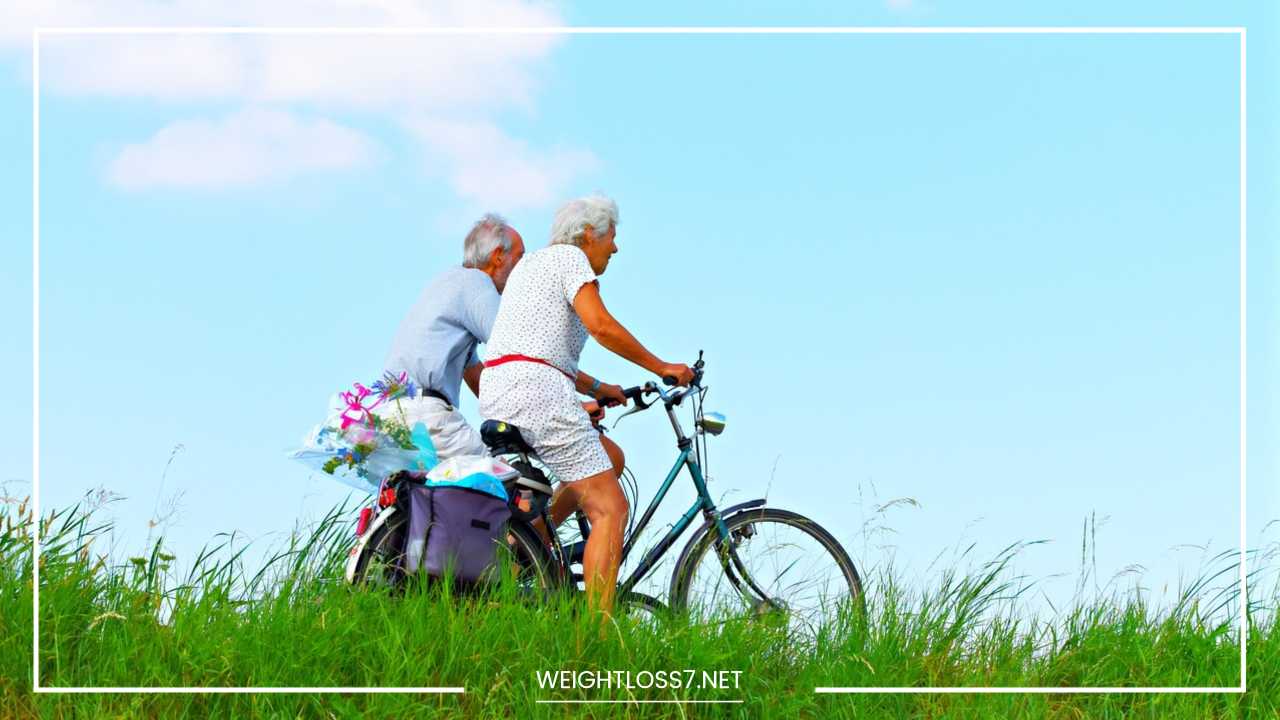Exercise for Seniors: Stay Strong & Healthy

Exercise for Seniors
Exercise for Seniors: Staying Strong, Healthy, and Happy
As we gracefully age, our bodies adapt to a new chapter. While we might not possess the boundless energy of our youth, our bodies are still capable of incredible things.
Regular exercise becomes even more crucial during this stage of life, offering a powerful tool to maintain strength, independence, and overall well-being.
This blog post dives deep into the world of exercise for seniors, exploring the benefits, discussing various exercise options, and providing tips to get you started and stay motivated on your fitness journey.
The Symphony of Benefits: Why Exercise Matters for Seniors
Just like a well-conducted symphony, regular exercise has a profound effect on various aspects of senior health, creating a harmonious balance. Here’s a closer look at the benefits that make exercise such a valuable addition to your life:
-
Physical Prowess: Exercise strengthens muscles and bones, reducing the risk of falls and injuries – a significant concern for older adults. It helps manage weight, improves cardiovascular health by strengthening your heart and lungs, lowers blood pressure, and can even help control chronic conditions like diabetes and arthritis. Think of it as building a strong and resilient foundation for your golden years.
-
Mental Acuity: Forget the myth that exercise is just for the body. Physical activity acts as a powerful mood booster, releasing endorphins – natural chemicals that elevate mood and reduce stress. Exercise can also help improve cognitive function, memory, and focus, potentially reducing the risk of dementia. It’s like giving your brain a much-needed workout, keeping it sharp and vibrant.
-
Energy Surge: Regular exercise might seem counterintuitive, but it actually gives you more energy! It improves circulation and oxygen flow throughout the body, leaving you feeling more alert and revitalized. Imagine starting your day feeling refreshed and ready to tackle whatever life throws your way.
-
Restful Slumber: Struggling to catch those precious Zzz’s? Physical activity can be a natural sleep aid. Exercise helps you fall asleep faster and sleep more soundly, allowing your body to fully recharge and wake up feeling refreshed.
-
Social Symphony: Many forms of exercise are inherently social activities. Joining a fitness class, going for walks with friends, or participating in group activities like tai chi can help you connect with others and combat feelings of isolation. Imagine a social circle that keeps you engaged and fosters a sense of belonging.
-
Independence for Life: Staying active helps you maintain your ability to perform daily tasks, from climbing stairs and carrying groceries to getting dressed and gardening. This translates to a greater sense of independence and control over your life, allowing you to live life on your own terms.
Finding the Perfect Fit: Exercise Options for Seniors
The beauty of exercise for seniors lies in its diverse range of options. There’s something for everyone, regardless of fitness level or physical limitations. Here’s a closer look at some excellent choices you can explore:
-
Cardiovascular Champions: Aim for at least 150 minutes of moderate-intensity aerobic activity or 75 minutes of vigorous-intensity activity each week. This category boasts a variety of options to keep things interesting. Brisk walking is a fantastic all-around choice, offering a low-impact workout that gets your heart rate up. Swimming is another excellent option, providing a gentle workout on your joints while strengthening muscles and improving cardiovascular health. Cycling, either outdoors or on a stationary bike, is a great way to get some fresh air or enjoy the comfort of home while getting a good cardio workout. Dancing is a fun and social way to get your heart pumping. From ballroom dancing to line dancing or simply dancing to your favorite music at home, it’s a joyful way to reach your cardio goals. Water aerobics is a fantastic option for those who prefer a low-impact workout in a refreshing environment.
-
Strength Builders: Building muscle mass is crucial for maintaining bone density and preventing falls as we age. Strength training exercises can be done with weights, resistance bands, or even just your bodyweight. Here are some beginner-friendly exercises to get you started: Squats – a classic exercise that strengthens your legs, core, and glutes. Lunges – another great exercise for leg strength and balance. Wall pushes – a modified push-up that doesn’t require getting on the floor, perfect for building upper body strength. Bicep curls – using light weights or resistance bands to strengthen your arms. Remember, consistency is key! Even short, regular strength training sessions can make a big difference.
-
Balance Beam: Balance becomes more important as we age. Exercises that challenge your balance can help improve stability and reduce the risk of falls. Here are a few examples: Heel-toe walking – a simple exercise that involves placing your heel in front of your toe with each step. Single-leg stands – start by holding onto a chair for support as you stand on one leg, gradually progressing towards unaided balancing. Tai chi – this ancient Chinese practice combines gentle movements, deep breathing, and meditation, promoting balance, flexibility, and overall well-being.
- Flexibility for Life: Stretching regularly helps maintain your range of motion and keeps your joints loose. This not only improves your physical comfort but also allows you to move more freely and perform daily tasks with ease. Yoga is a fantastic option, offering a combination of gentle stretches, strengthening postures, and breathing exercises. Pilates is another excellent choice, focusing on core strength, flexibility, and body alignment. Even simple stretches done at home can make a big difference. Focus on major muscle groups like your hamstrings, quads, calves, back, and shoulders. Hold each stretch for 30 seconds and repeat two to three times.
Making it Happen: Getting Started and Staying Motivated
Taking the first step towards a healthier you can feel daunting, but with the right approach, exercise can become an enjoyable and rewarding part of your life. Here are some tips to get you started and stay motivated on your fitness journey:
-
Consult Your Conductor: Before embarking on a new exercise program, it’s wise to consult with your doctor. They can give you the green light and offer personalized recommendations based on your health condition and fitness level. This ensures you’re starting with a safe and effective program that aligns with your individual needs.
-
Start with a Short Overture: Don’t try to do too much too soon. Begin with short workouts, perhaps 10-15 minutes a day, and gradually increase the duration and intensity as your fitness improves. Consistency is key, so aim for regular exercise, even if it’s just for short periods.
-
Find Your Harmony: Exercising with a friend or family member can make it more fun and keep you accountable. Find an exercise buddy who shares your interests and fitness level. You can motivate each other and enjoy the social aspect of working out together.
-
Listen to Your Body: Don’t push yourself beyond your limits, especially when starting out. Pay attention to your body’s signals. If you experience any pain, take a break and adjust the intensity of your workout. Remember, the goal is to feel good, not to push through discomfort.
-
Embrace the Encore: Make exercise enjoyable! Choose activities you genuinely find fun. Whether it’s dancing to your favorite tunes, taking a walk in nature, or joining a fitness class that sparks your interest, find ways to make exercise a positive experience you look forward to.
-
Set Achievable Goals: Setting realistic and achievable goals can be a powerful motivator. Start with small, attainable goals and gradually increase the difficulty as you progress. Celebrate your accomplishments, no matter how small they might seem. Tracking your progress in a journal or using a fitness tracker can also be a great way to stay motivated and see how far you’ve come.
Additional Resources: Expanding Your Senior Fitness Symphony
There’s a wealth of resources available to help you on your senior fitness journey. Here are a few suggestions to explore:
-
Senior Centers: Many senior centers offer a variety of fitness classes specifically designed for older adults. These classes are often led by experienced instructors who can cater to different fitness levels and abilities. Check with your local senior center to see what classes they offer.
-
Online Resources: The internet is a treasure trove of information on senior fitness. Numerous websites and YouTube channels offer exercise videos and routines tailored for seniors. You can find exercise programs for all fitness levels, interests, and abilities.
-
Consider a Personal Trainer: A certified personal trainer specializing in working with older adults can be a valuable resource. They can create a safe and effective exercise program customized for your specific needs and goals. A personal trainer can also provide guidance on proper form and technique to ensure you’re getting the most out of your workouts and minimizing the risk of injury.
Embrace the Journey: Exercise for a Vibrant Life
Exercise for seniors isn’t just about physical fitness; it’s about embracing a vibrant and fulfilling life. By incorporating physical activity into your daily routine in ways you enjoy, you can reap the numerous benefits it offers for your physical and mental well-being.
Remember, it’s never too late to start! Take the first step today and embark on a journey towards a stronger, healthier, and happier you.
Beyond the Basics: Advanced Considerations for Senior Exercise
While the core principles of exercise for seniors remain the same, there might be additional factors to consider as you progress on your fitness journey. Here’s a deeper dive into some advanced considerations:
Staying Safe: Injury Prevention and Modifications
As with any exercise program, safety is paramount. Here are some tips to minimize the risk of injury:
- Warm-up and Cool-down: Always begin your workout with a 5-10 minute warm-up to prepare your muscles and joints for activity. This could include light cardio like walking or gentle stretches. Similarly, cool down after your workout with static stretches to improve flexibility and prevent muscle soreness.
- Listen to Your Body: Pain is a signal that something’s not right. If you experience any pain during exercise, stop immediately. Consult your doctor to rule out any underlying conditions and adjust your workout routine as needed.
- Proper Form Matters: Using proper form during exercises ensures you’re working the intended muscle groups and minimizes stress on your joints. If you’re unsure about the proper form for an exercise, don’t hesitate to ask a qualified professional for guidance.
- Modifications are Your Friend: Don’t be afraid to modify exercises to suit your fitness level and limitations. For example, if squats are too challenging, you can try performing them using a chair for support. There are also low-impact variations of most exercises to keep you active and safe.
Staying Hydrated: Fueling Your Workouts
Proper hydration is crucial for optimal performance and overall health. Here are some tips to stay hydrated during exercise:
- Drink Water Throughout the Day: Aim to drink plenty of water throughout the day, even when you’re not exercising. This helps maintain proper fluid balance in your body.
- Hydrate Before, During, and After Exercise: Drink water 30 minutes before your workout and sip small amounts of water throughout your exercise session. Aim to replace any fluids lost through sweat after your workout.
Nutritional Considerations: Eating for Exercise
Eating a healthy diet provides your body with the essential nutrients it needs to perform at its best and recover from exercise. Here are some general guidelines:
- Focus on Whole Foods: Base your diet on whole, unprocessed foods like fruits, vegetables, whole grains, and lean protein sources. These foods provide your body with essential vitamins, minerals, and fiber.
- Don’t Skip Meals: Aim to eat regular meals and snacks throughout the day to maintain your energy levels.
- Fuel Up Before Your Workout: Eat a light, healthy snack about an hour before your workout to provide your body with energy.
- Refuel After Your Workout: Eating a recovery meal or snack within 30 minutes of finishing your workout helps your body repair muscle tissue and replenish glycogen stores.
Mental Fitness: The Mind-Body Connection
Exercise isn’t just about physical benefits; it also plays a crucial role in mental well-being. Here are some ways to incorporate mental fitness into your exercise routine:
- Mindfulness: Practices like mindfulness meditation can enhance your focus and awareness during exercise, allowing you to be more present in the moment.
- Focus on the Positive: Focus on the positive aspects of exercise, such as the feeling of accomplishment and the joy of movement. This can help you stay motivated and enjoy your workouts more.
- Set Realistic Goals: Setting achievable goals helps you stay motivated and track your progress. Celebrate your accomplishments, no matter how small they may seem.
Staying Social: The Power of Community
Social interaction is important for overall well-being, and exercise can be a great way to connect with others. Here are some ways to stay social while exercising:
- Join a Fitness Class: Group fitness classes provide an opportunity to exercise with others and build a sense of community.
- Find an Exercise Buddy: Exercising with a friend or family member can make it more fun and keep you accountable.
- Volunteer While Staying Active: Look for volunteer opportunities that involve physical activity, such as gardening or walking dogs for a shelter.
Final Word: Exercise – A Symphony for a Vibrant Senior Life
Exercise for seniors is a powerful tool for maintaining physical and mental well-being, promoting independence, and enhancing overall quality of life.
By incorporating physical activity into your daily routine and gradually increasing the intensity and duration as your fitness improves, you can create a beautiful symphony of health and happiness for your golden years.
Remember, it’s never too late to start! Embrace the journey, find activities you enjoy, and embark on a path towards a stronger, healthier, and happier you.

















